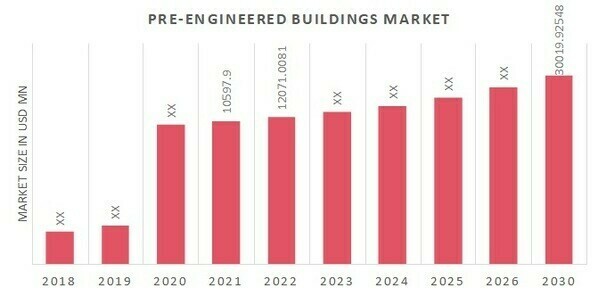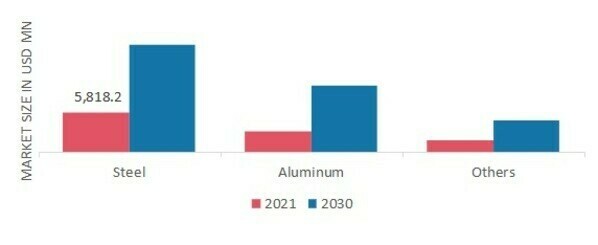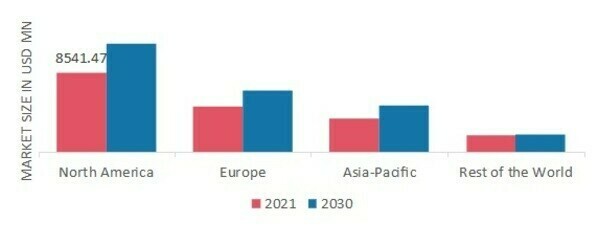

- Global Market Outlook
- In-depth analysis of global and regional trends
- Analyze and identify the major players in the market, their market share, key developments, etc.
- To understand the capability of the major players based on products offered, financials, and strategies.
- Identify disrupting products, companies, and trends.
- To identify opportunities in the market.
- Analyze the key challenges in the market.
- Analyze the regional penetration of players, products, and services in the market.
- Comparison of major players’ financial performance.
- Evaluate strategies adopted by major players.
- Recommendations
- Vigorous research methodologies for specific market.
- Knowledge partners across the globe
- Large network of partner consultants.
- Ever-increasing/ Escalating data base with quarterly monitoring of various markets
- Trusted by fortune 500 companies/startups/ universities/organizations
- Large database of 5000+ markets reports.
- Effective and prompt pre- and post-sales support.
The Pre-Engineered Buildings (PEB) market is driven by dynamic factors that shape the production, demand, and applications of modular structures designed for efficient construction. PEBs are prefabricated building systems characterized by a structural framework that is pre-designed and fabricated off-site. The market dynamics are intricately linked to factors such as industrial growth, construction trends, cost efficiency, and sustainability considerations.
Pre-engineered buildings are widely used for the construction of industrial and residential buildings, where the construction is 40% faster than traditional structures. Additionally, the pre-engineered buildings market is driven by the increasing demand for warehouses in emerging economies such as India, South Africa, Brazil, and Saudi Arabia. With a rise in the number of e-retailers, the demand for warehouses is also increasing.
One of the key drivers of the Pre-Engineered Buildings market is the rapid industrialization and infrastructure development taking place globally. PEBs are widely adopted in industrial construction due to their cost-effectiveness, speed of installation, and flexibility in design. Industries such as manufacturing, logistics, and warehousing utilize PEBs for the construction of factories, warehouses, and distribution centers. The modular nature of PEBs allows for quick and efficient construction, meeting the demands of industries requiring fast-track building solutions.
The construction sector represents a significant influencer of the PEB market dynamics. PEBs find applications in commercial, institutional, and residential construction projects, providing a versatile solution for various building types. The demand for PEBs is driven by factors such as reduced construction time, cost savings, and design flexibility. As construction practices evolve, and developers seek efficient and sustainable building solutions, the adoption of PEBs continues to grow.
Cost efficiency is a key factor contributing to the dynamics of the PEB market. Traditional construction methods often involve complex and time-consuming processes, leading to higher costs. PEBs offer a streamlined construction approach, reducing labor requirements and construction time. The ability to deliver cost-effective structures makes PEBs an attractive option for projects with budget constraints.
Sustainability considerations play an increasing role in shaping the market dynamics of PEBs. As the construction industry aims to reduce its environmental footprint, PEBs offer advantages such as reduced material waste, energy efficiency, and the potential for recyclability. The modular design of PEBs allows for efficient use of resources, contributing to sustainable construction practices.
Supply dynamics in the PEB market are influenced by factors such as the availability of raw materials, skilled labor, and manufacturing capabilities. The steel industry, a primary raw material supplier for PEBs, impacts the overall supply chain dynamics. Additionally, advancements in manufacturing processes, such as computer-aided design (CAD) and automated fabrication, influence the efficiency and cost-effectiveness of PEB production.
Global trade dynamics are significant in the PEB market, with many countries involved in both the production and consumption of pre-engineered building systems. Trade agreements, tariffs, and regional economic conditions can impact the flow of PEB materials and components across borders. The market is also influenced by competition among manufacturers to offer innovative PEB solutions with enhanced design features and performance.
Technological advancements in PEB design and construction contribute to the market dynamics, enabling the development of structures with improved strength, energy efficiency, and customization options. Innovations in software tools for design and analysis, as well as advancements in manufacturing technologies, enhance the capabilities and quality of PEBs. Manufacturers strive to stay ahead by incorporating the latest technologies into their products.
Price volatility is a common factor in the PEB market, driven by fluctuations in raw material prices, manufacturing costs, and market demand. Companies in this dynamic market must implement effective pricing strategies and risk management practices to navigate the uncertainties associated with price variations.
Pre-engineered Buildings Market Highlights:
Global Pre-engineered Buildings Market Overview
The pre-engineered buildings market size was valued at USD 10597.9 million in 2021. The Pre-engineered Buildings industry is projected to grow from USD 12071.0081 million in 2022 to USD 30019.92548 million by 2030, exhibiting a compound annual growth rate (CAGR) of 13.90% during the forecast period (2024 - 2030). Rising demands for warehousing and the growing construction industry are the key market drivers enhancing the growth of the pre-engineered buildings market. Source: Secondary Research, Primary Research, MRFR Database and Analyst Review
Source: Secondary Research, Primary Research, MRFR Database and Analyst Review
Pre-engineered Buildings Market Trends
-
Growing demands for warehousing to boost pre-engineered buildings market growth
The pre-engineered buildings industry is expanding due to rising industrialization worldwide and increased awareness of advanced off-site construction methods and technology. As e-commerce and logistics stores have increased in the retail sector, there has been a surge in demand for industrial storage facilities and warehouses. Pre-engineered buildings, which are more affordable and durable than conventionally built structures, are now more necessary. A longer building material life cycle, limitless design freedom, and lower material and labor costs are some of the significant performance advantages of pre-engineered building systems. The market has grown due to the advent of pre-engineered green buildings. These eco-friendly buildings are low-carbon, energy-efficient options that require less during and after construction.
Additionally, Pre-engineered structures and technology advancements have significantly improved the quality of life. Compared to masonry, pre-engineered buildings construction takes 30 to 40% less time. A tropical nation like India will benefit greatly from PEB buildings' effective insulation. For construction in remote and incline locations, pre-engineered buildings are a great option. Pre-engineered structures make up more than 60% of non-residential low-rise buildings in the United States, according to a recent study by the Metal Building Associations (MBA). Therefore, such a surge in the demands for warehousing and technological advancement has enhanced the pre-engineered buildings market CAGR ly in recent years.
Furthermore, Pre-engineered buildings market revenue is anticipated to be constrained over the projected period by increased corrosion risk and decreased thermal and fire resistance. A major barrier to adopting pre-engineered buildings in nations like India is the country's persistent reliance on conventional construction techniques. But over the projected period, demand for these goods is anticipated to increase dramatically as more people become aware of the advantages of pre-engineered buildings.
Pre-engineered Buildings Market Segment Insights
Pre-engineered Buildings Material Insights
The pre-engineered buildings market segmentation based on material includes steel, aluminum, and others. The steel segment held the majority share in 2021, contributing to the pre-engineered buildings market revenue. Prefabricating steel for construction has several advantages, including a 50% increase in building speed, a high level of quality control, and less waste. Steel is a material that can be fabricated in a factory, making it ideal for roof additions and other building improvements. Additionally, qualities like resistance to inclement weather, moisture, termites, and fire, which offer durability, safety, and low-cost maintenance, also fuel demand for steel as a material in the worldwide pre-engineered construction industry.
Aluminum is the second fastest-growing segment, which accounts for a considerable share of the pre-engineered buildings market. Using a pre-engineered metal building kit has several advantages depending on the size and scope of the aluminum manufacturing enterprise. Both a big, sprawling, multi-layered complicated building or a small, single-layer facility is possible. A metal building kit can satisfy all of their requirements.
February 2022: The market leader in construction technology, Trimble, recently revealed that Zamil Steel, a renowned engineer, and producer of numerous high-quality steel products, has chosen its software, including Tekla PowerFab, to revolutionize steel fabrication in its factories in Vietnam, Saudi Arabia, and other Middle Eastern countries.
September 2020: A strategic alliance between Metal Building Software and Tekla Structures, the company's flagship product and a pioneer in construction technology, has been announced by Trimble (MBS). A full Building Information Modeling (BIM) procedure is delivered for all metal buildings under the terms of this collaboration, which was created by the two businesses.
Figure 2: Pre-engineered Buildings Market, by Material, 2021 & 2030 (USD Million) Source: Secondary Research, Primary Research, MRFR Database and Analyst Review
Source: Secondary Research, Primary Research, MRFR Database and Analyst Review
Pre-engineered Buildings Product Insights
The pre-engineered buildings market segmentation based on product, includes walls, columns & beams, roof & floors, and others. The roof & floors segment held the majority share in 2021, contributing to the pre-engineered buildings market data. Regarding value, flooring and roofs are important components of pre-engineered structures worldwide. The building's roof serves as its top covering and is exposed to the most solar radiation. It must be safe and stable to carry the burden that human activity has placed on it. Roofs also need to be insulated from sound and heat. Additionally, floors are essential components for both architectural flexibility and design. The floors' load-bearing capacity directly impacts a PEB's partition walls and other structural components.
Walls is the second fastest-growing segment, which accounts for a considerable share of the pre-engineered buildings market. Structures made of pre-engineered components are adaptable. For a civilized finish, they can be customized with various fascia types, canopies, glass partitions, etc., creating a structure with an exquisite appearance. Precast concrete wall panels, curtain walls, block walls, and other wall systems can be installed on other structural elements like curving eaves.
Pre-engineered Buildings Regional Insights
By Region, the study provides market insights into North America, Europe, Asia-Pacific and Rest of the World. Asia Pacific pre-engineered buildings market accounted for USD 4217.9642 million in 2021 and is expected to exhibit a 39.80% CAGR growth during the study period. This is attributed to the growing real estate industry for pre-engineered buildings and the growing corporate atmosphere across the region.
During the anticipated time, China pre-engineered buildings market would likewise present a lucrative opportunity for international market players. Due to favorable government policies encouraging investments in the manufacturing sector, the nation is anticipated to see an increase in industrial buildings over the projection period. Additionally, the relocation of production facilities by various businesses, including BMW and Volkswagen, will probably increase demand for industrial building construction, which will help the industry expand.
Further, the major countries studied in the market report are: The U.S, Canada, Germany, France, UK, Italy, Spain, China, Japan, India, Australia, South Korea, and Brazil.
Figure 3: PRE-ENGINEERED BUILDINGSMARKET SHARE BY REGION 2021 (%) Source: Secondary Research, Primary Research, MRFR Database and Analyst Review
Source: Secondary Research, Primary Research, MRFR Database and Analyst Review
North America pre-engineered buildings market held the second-largest share during the projected period, it is expected to grow sustainably. It is anticipated that real estate and commercial sector repair and refurbishment projects will increase demand for pre-engineered buildings in the area. By the year 2025, 1,018 affordable homes would be built, according to the National Housing Development Corporation Limited (NHDCL) of Bhutan. It would take until the end of 2025 to complete 1,018 (123 buildings) affordable rental housing units, disappointing locals who had hoped for more inexpensive homes sooner. Multinational companies can compete for construction contracts in Phuentsholing and Samtse while local businesses supply the necessary knowledge and manpower thanks to contemporary pre-engineered buildings technology. Additionally, the US pre-engineered buildings market was the dominant region and Canada pre-engineered buildings market is the fastest growing market in the North American region.
Middle Eastern nations are pursuing economic diversification to lessen their reliance on the oil and gas sector. They are developing long-term plans for sustainable economic growth and implementing the pre-engineered buildings idea in the construction sector. Furthermore, the MEA pre-engineered buildings market is predicted to benefit from the tourist sector's strong expansion.
Pre-engineered Buildings Key Market Players & Competitive Insights
Major market players are investing a lot of capitals on R&D to enhance their product lines, which will aid the Pre-engineered Buildings market expand. Market players are also taking a range of strategic measures to expand their worldwide footprint, with prime market developments such as new product innovations & launches, contracts & agreements, mergers and acquisitions, better investments, and collaboration & strategic partnerships with other organizations in the Pre-engineered Buildings market. Competitors in the pre-engineered buildings industry must offer cost-effective items to extend and survive in an increasingly high competitive and expanding market environment.
One of the primary business strategies manufacturers adopt in the Pre-engineered Buildings industry to benefit clients and expand the market sector is manufacturing locally to reduce operating costs. In recent years, pre-engineered buildings industry has provided medicine with some of the most significant benefits. The pre-engineered buildings market major player such as Bluescope, Zamil Steel Holding Company, Kirby Building Systems, Nucor Corporation, Everest Industries, and others are working to drive the market growth via investing heavily in research and development activities.
Nucor Corporation has over three decades of experience designing and producing specialized metal building systems. The business effectively serves clients across North America and beyond with four strategically placed factory locations and a coast-to-coast network of more than 1,200 Authorized Builders. In December 2022, The recently established Nucor Towers & Structures business unit will be expanded by the construction of two brand-new, cutting-edge tower production facilities, according to Nucor Corporation. The Midwest and the Southeast are two regions that Nucor is looking at.
Also, Zamil Steel Holding Company is a pre-engineered buildings company. Zamil Steel is among the biggest producers and suppliers of pre-engineered buildings in Asia and Africa, with an annual manufacturing capacity of more than 6,000,000 m 2. In November 2021, Since the company's founding in 1999, one million metric tonnes of steel goods have been produced in its plants in Cairo's 6th of October City and Sadat City, according to an announcement from Zamil Steel Buildings Egypt.
A list of the Key Companies in the Pre-engineered Buildings Market Include
-
Bluescope
-
-
Kirby Building Systems
-
Nucor Corporation
-
Everest Industries
-
NCI Building Systems
-
PEB Steel
-
-
Lindab Group
-
ATCO, among others
Pre-engineered Buildings Industry Developments
April 2023: Kirby Building Systems, a leading manufacturer of pre-engineered buildings, announced the expansion of its production capacity in the United States. The expansion will allow the company to meet the growing demand for pre-engineered buildings in the country.
May 2023: BlueScope Steel, a global steel manufacturer, launched a new line of pre-engineered buildings that are designed to be more sustainable. The new buildings feature energy-efficient features such as LED lighting and insulation, which can help customers save money on their energy bills.
June 2023: Everest Industries, a leading Indian manufacturer of pre-engineered buildings, announced the launch of its new website. The new website features a more user-friendly design and provides more information about the company's products and services.
January 2019: India-based an 18-story commercial building and a 6-story school building were built in India by Pennar Engineered Building Systems Limited.
January 2019: BlueScope's Vietnam-based ASEAN pre-engineered buildings division was acquired by Nova Buildings. The acquisition will help Nova grow its pre-engineered building business.
Pre-engineered Buildings Market Segmentation
Pre-engineered Buildings Material Outlook
-
Steel
-
Aluminum
-
Others
Pre-engineered Buildings Product Outlook
-
Walls
-
Columns & Beams
-
Roof & Floors
-
Others
Pre-engineered Buildings Application Outlook
-
Residential
-
Commercial
-
Industrial
Pre-engineered Buildings Regional Outlook
-
North America
-
US
-
Canada
-
-
Europe
-
Germany
-
France
-
UK
-
Italy
-
Spain
-
Rest of Europe
-
-
Asia-Pacific
-
China
-
Japan
-
India
-
Australia
-
South Korea
-
Australia
-
Rest of Asia-Pacific
-
-
Rest of the World
-
Middle East
-
Africa
-
Latin America
-
Leading companies partner with us for data-driven Insights
Kindly complete the form below to receive a free sample of this Report
Tailored for You
- Dedicated Research on any specifics segment or region.
- Focused Research on specific players in the market.
- Custom Report based only on your requirements.
- Flexibility to add or subtract any chapter in the study.
- Historic data from 2014 and forecasts outlook till 2040.
- Flexibility of providing data/insights in formats (PDF, PPT, Excel).
- Provide cross segmentation in applicable scenario/markets.





















